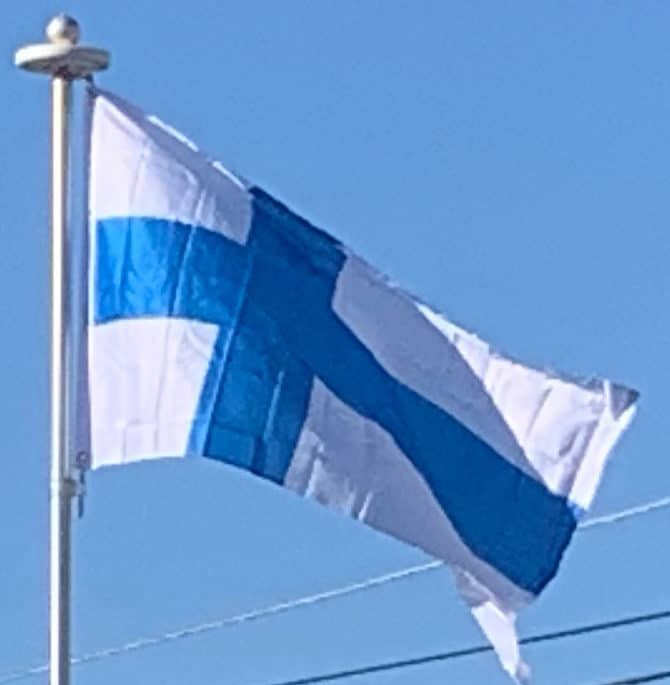In 1910, in connection with Russification of Finland, the Russian authorities decreed that a Russian flag was to be added to the canton. However, this was met with resistance; the flag was derided as the “slave’s flag” (orjalippu), and most Finns refused to fly it. Instead, a triangular pennant without this modification was flown, thereby circumventing the decree concerning flags.
Shortly after Finland gained independence in 1917, a competition was held for the design of the Finnish flag. Several different designs were submitted. Regarding the colors, the entries fell mainly into two categories – one using the red and yellow from the Finnish coat of arms, and the other using the present blue and white colors.
One entry had the Dannebrog cross design, but with a yellow cross on a red background. Another entry had diagonal blue and white stripes, but it was criticized as being more suitable for a barber shop than a newly independent country. Akseli Gallen-Kallela proposed a similar cross flag, but with colors inverted (white cross on blue), but this was considered too similar to the Swedish flag and particularly the Greek flag of the time. Finally, artists Eero Snellman and Bruno Tuukkanen specified the final form of the flag.
The state flag was further modified in 1922, when the coronet was removed, and again in 1978 when the shield-shaped coat of arms was changed into a rectangular shape.
